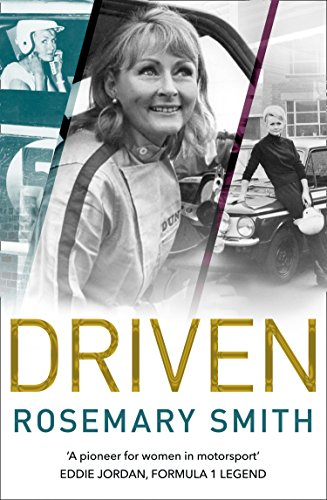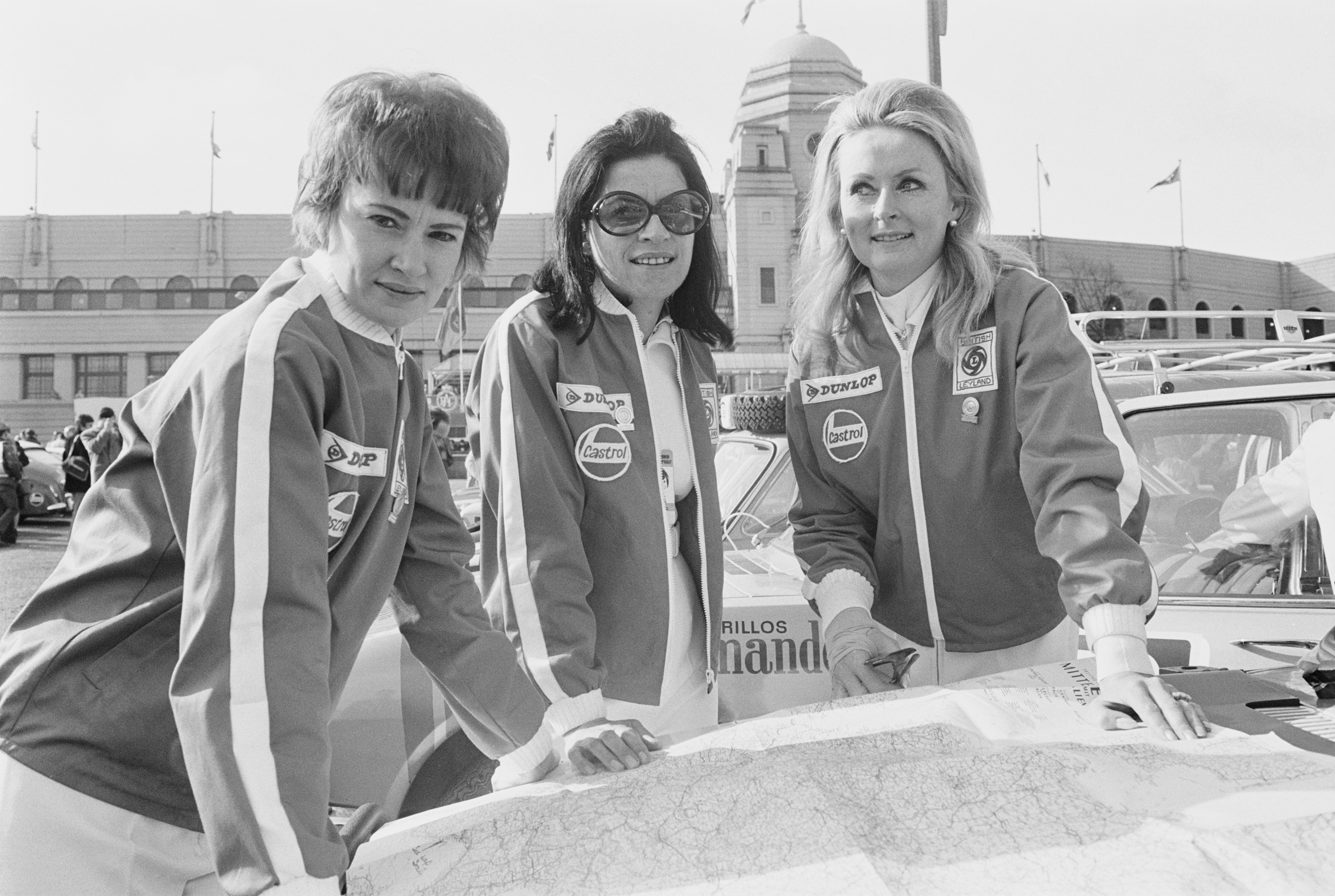Rally Driver Rosemary Smith Balances Racing With A Complex Personal Life In Driven
Rosemary Smith made headlines for the first time in decades when, in 2017, she became the oldest person to drive a Formula One car at 79 years of age. It was a brief moment of vindication for the former rally driver who spent years battling stereotypes and low expectations: here, she could prove herself on an international scale in an era of rapid media sharing. For a multi-time Coupe des Dames winner, it was the recognition she deserved.
(It lives! Welcome back to the Jalopnik Race Car Book Club, where we all get together to read books about racing and you send in all your spicy hot takes. In honor of being trapped indoors, I've made the reading a little more frequent; every two weeks instead of every month. This week, we're looking at Driven by Rosemary Smith, the autobiography of one of rallying's coolest women.)

If there was one thing I loved about Smith's story, it was her unapologetic commitment to her femininity, which she often frames as being to her advantage. Her false eyelashes, she says, would brush her cheeks when she closed her eyes, which would keep her from drifting off to sleep during long haul drives. At the 24 Hours of Daytona, she stayed awake by pulling off her racing gloves and picking off her nail polish. She ended up rallying because one of the clients she made dresses for thought she'd make a good traveling companion, after all.
Smith was born near Dublin, Ireland in 1937 to a middle class family that had its own share of drama. She was never formally trained in school, instead opting to take up both modeling and dressmaking—the latter of which she found to her liking. Smith worked with high-class dressmakers in Dublin before she and her mother set up their own business. It was there, interestingly, that Smith got her start in rallying.
Delphine Bigger, a wealthy woman married to a rally driver who competed in rallies herself, took a liking to Smith and decided to invite her along on rallies as a co-driver. It turned out that Smith was a better driver than she was a co-driver, and so began a lifelong love affair with fast cars.
Smith was offered a position as a works driver for Rootes, a British manufacturer, almost immediately proving her worth by taking home countless ladies' prizes before winning the challenging Tulip Rally outright in 1965. She has charming descriptions of her travels and the friends she made along the way, alongside her annoyances and frustrations. Some co-drivers just didn't work for her. Others became a crucial part of her success. Smith is candid about the realities of being a rally driver, from the discrimination and romantic attractions directed at her to the awful smell of Wellington boots in the middle of a damp rally.
Honestly, some of the most incredible events detailed here are Smith's international rallies, like the London to Sydney Marathon or the World Cup London to Mexico rally, where drivers were given just a few weeks to cross both land and sea. While ladies' wins were important, what's more impressive is that Smith was almost always there at the end of events that, in many cases, over 100 drivers would start and fewer than 20 would finish.

Racing is important for Smith, but it also isn't the only thing in her life. A significant portion of her autobiography describes life at home after the dust has settled. She reveals her hesitance to commit to a long-term relationship, only to settle down with a man that resented her success. In some ways, it was a practical marriage: In Ireland at the time, grown women were still the dependents of men, and it was presumed that any woman of marrying age would have long since settled down.
Whether it be hindsight or a recollection of memories at the time, Smith is pretty open about the fact that she struggled to settle down and that, when she did, it was less about love and more about the pressure she felt as an unmarried woman. It's honestly a little heartbreaking to read, because she makes it clear that she wasn't particularly happy, and her husband often seemed to pointedly make her unhappier—such as buying her a house that she absolutely resented and using her money for his own designs. She miscarried multiple times and was made to feel inadequate both as a wife and as a woman with a career. Her husband often referred to her rallying trips as "another ego trip." At the end of the day, it largely seems to have been the death of her racing life. While she accepted offers thrown her way, she wasn't competing with the same frequency as she had been.
Smith's life post-racing is one of the most heartbreaking but exceptional parts of the whole story. She went from being a successful jetsetting racer to a divorcée living off public assistance before falling foul of a real estate scam. She's open about the fact that she struggled and that many of her friends disappeared as soon as the going got rough. But those that stuck by her have been friends for life, and they were the ones who encouraged her to accept Renault's offer to drive its F1 around Paul Richard in 2017.
The book is a quick, enjoyable read, with Smith's charm evident on every page. She's funny, witty, and serious in equal measures depending on what the moment calls for. As she mentions in her prologue, Smith is recounting her life stories with nothing but memory, having not kept a diary or a log of her experiences while they were happening. You're not going to get a massively detailed account of her every race outing, but that's okay—this is a book about the experience of being a woman in racing at the time, so you really only need the biggest hits to understand where Smith is coming from. I didn't close the book feeling like I was lacking anything.
In fact, Smith presents a more well-rounded picture of a racer's life than do most other biographies or autobiographies, largely because she's far more open about the personal side of things. No driver's life is legitimately composed of nothing but racing, but very few are all that willing to talk about the complexities of their personal lives. That Smith does with humor and candor is what makes this book excel.
And that's all we have for this week's Jalopnik Race Car Book Club! Make sure you tune in again on September 6, 2020. We're going to be reading The IndyCar Wars: The 30-Year Fight for Control of American Open-Wheel Racing by Sigur E. Whitaker. And don't forget to drop those hot takes (and recommendations) in the comments or at elizablackstock [at] gmail [dot] com!
